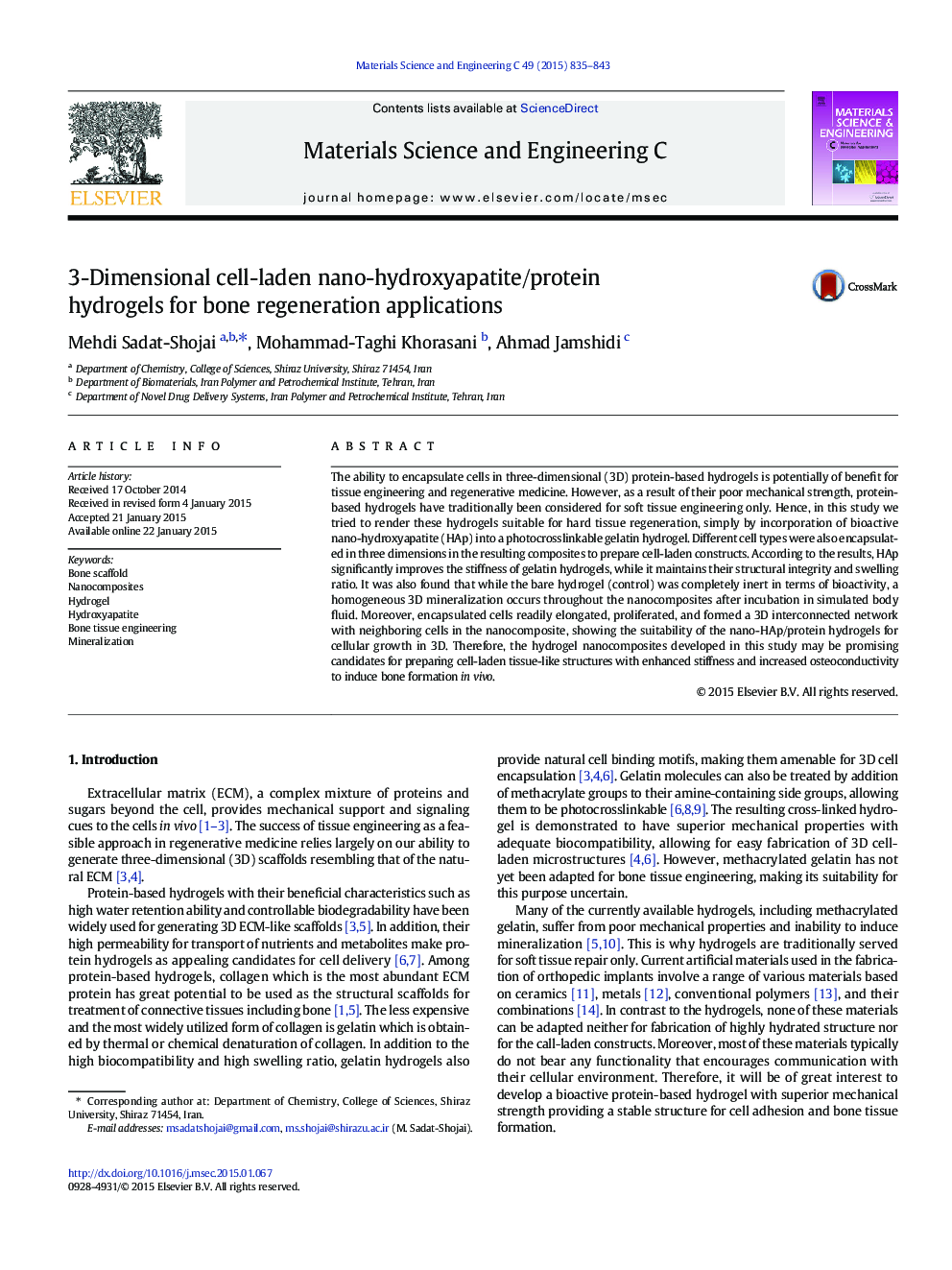| کد مقاله | کد نشریه | سال انتشار | مقاله انگلیسی | نسخه تمام متن |
|---|---|---|---|---|
| 1428243 | 1509172 | 2015 | 9 صفحه PDF | دانلود رایگان |
• We tried to render protein-based hydrogels suitable for hard tissue regeneration.
• We developed a three-component system comprising hydrogel, nano-HAp, and cells.
• Nano-HAp significantly improved the mechanical strength of hydrogel.
• Encapsulated cells readily elongated and proliferated in 3D cell-laden nanocomposite.
• 3D deposition of bone crystals occurred in the hydrogel nanocomposites.
The ability to encapsulate cells in three-dimensional (3D) protein-based hydrogels is potentially of benefit for tissue engineering and regenerative medicine. However, as a result of their poor mechanical strength, protein-based hydrogels have traditionally been considered for soft tissue engineering only. Hence, in this study we tried to render these hydrogels suitable for hard tissue regeneration, simply by incorporation of bioactive nano-hydroxyapatite (HAp) into a photocrosslinkable gelatin hydrogel. Different cell types were also encapsulated in three dimensions in the resulting composites to prepare cell-laden constructs. According to the results, HAp significantly improves the stiffness of gelatin hydrogels, while it maintains their structural integrity and swelling ratio. It was also found that while the bare hydrogel (control) was completely inert in terms of bioactivity, a homogeneous 3D mineralization occurs throughout the nanocomposites after incubation in simulated body fluid. Moreover, encapsulated cells readily elongated, proliferated, and formed a 3D interconnected network with neighboring cells in the nanocomposite, showing the suitability of the nano-HAp/protein hydrogels for cellular growth in 3D. Therefore, the hydrogel nanocomposites developed in this study may be promising candidates for preparing cell-laden tissue-like structures with enhanced stiffness and increased osteoconductivity to induce bone formation in vivo.
Figure optionsDownload as PowerPoint slide
Journal: Materials Science and Engineering: C - Volume 49, 1 April 2015, Pages 835–843
